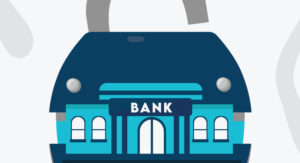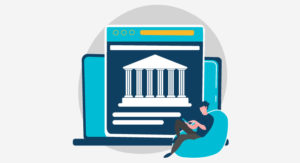How does Bank Data Validation Process Work?

Now that the financial industry has completely embraced technologies into their processes, it’s important for them to make sure that payments are error-proof. Customers make mistakes. Instead of trying to teach customers the right way, banks should employ a bank data validation tool. Banks should try to make every part of a customer’s journey as seamless as possible. This also includes smoothing out the transactions.
Another added benefit of doing so is that it helps in preventing fraudulent activities. When banks verify bank account information before every transaction, it reduces the risk of fraudulent payments going through. It goes without saying, bank data validation is crucial.
But what exactly is “Bank Data Validation?” In this article, we will shed some light on the bank data validation process and how it helps out banks and customers.
What is Bank Data Validation?
A lot of consumers confuse bank data validation and bank data verification processes. While they may sound the same, the processes are slightly different. Bank account data verification means verifying the input information against the information present in the database. Data validation on the other hand involves an algorithm-based process.
In simple words, it means that payment details are checked using a series of data and information. This allows the system to understand whether an account exists or not based on the numbers.
Moreover, this process is instant during payments, meaning customers don’t have to wait. Merchants can instantly verify the details and correct any errors that pop up. Bank data validation offers a number of benefits:
- Reduces the risk of payment errors/failures
- Eliminates the need of inputting bank details over and over again
- Uncovers and prevents fraudulent transactions
What is Bank Data Validation Automation?
Now that you have a fair understanding of how the bank data validation process works, let’s discuss how banks can implement it. The process of implementation is super easy for merchants. There are endless online solutions that will gladly help you implement the solution. You can ask them to install the solution and then automate the bank validation on the input of payment information.
There are a lot of bank data validation solutions out there, it’s easy to choose one based on your needs.
The process itself is pretty difficult, and it requires a deep understanding of data structures. Basically, the third-party services simultaneously check if the account information is correct and if the account can make the payments.
With access to this information, banks can decide whether to authorize the payments or not. Additionally, the bank data validation solution can also be used to access other data such as Bank Identifier Code (BIC), IBAN, and other information.
Advantages of Using a Bank Data Validation Solution
There are a number of benefits of implementing a bank data validation solution. Banks of today need to provide a smooth experience to the customers, so technological integration is important. A bank data validation solution can help your business by:
- Avoid Payment Delays
When you have a process in place that verifies bank information before payment, you can get rid of unwanted payment delays. Any incorrect information that a customer adds will be instantly identified. Customers won’t have to re-enter information once the payment fails.
- Eliminate Fraud & Multiple Tries
If a transaction is authorized without verifying the details, it can be expensive to rectify the information. So, the best way to move forward is by identifying information firsthand. It can also reduce the risk of fraudulent payments being authorized.
- Valid Payments
It helps in confirming if the payments are valid or not before they are processed. This leads to improved customer satisfaction. Customers get annoyed if they have to re-enter the same information. When information is verified firsthand before the payment, customers get a sense of security in the institution.
Simply put, bank data validation is an essential tool for increasingly modern banking. It improves customer satisfaction, and also reduces the headaches for the bank’s payment processing team.













